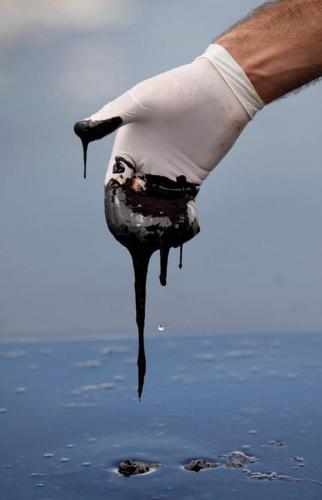Among the 31 research projects that will share $50 million in Gulf of Mexico Research Initiative are three from the University of Southern Mississippi.
BP gave the initiative $500 million to study the Gulf of Mexico in the wake of the 2010 Deepwater Horizon oil disaster, and this latest round includes $35 million for eight research consorita and $15 million for 23 small research teams such as those at USM.
“The findings from these studies benefit society by informing new strategies to prevent and mitigate any negative effects of an oil spill in the Gulf of Mexico, or elsewhere,” said Dr. Rita Colwell, Chairman of the GoMRI Research Board.
The USM teams will track Gulf floor sediment, will attempt to close gaps in what is known about Gulf fish and their diets and will study fish RNA.
“The overall goal of the project is to address major knowledge gaps for the Gulf of Mexico by describing the abundance, distribution and diets of deep water larval ("baby") fishes and their plankton prey, and how these organisms and their food webs are connected to the upper ocean,” said Frank Hernandez, who’ll lead scientists from USM, the University of Louisiana at Lafayette, and Oregon State University. “Much of what we know about the Gulf of Mexico ecosystem is limited to shallow coastal waters and upper ocean regions, even though over 90 percent of the Gulf of Mexico's volume occurs at depths greater than 200 meters. The Deepwater Horizon oil spill occurred in the deep Gulf of Mexico, and the lack of baseline data for this region was a major impediment to the damage assessment efforts.”
He said as oil exploration heads deeper into the Gulf, that increases the chances of another disaster and makes the need for a baseline even more critical. They’ll be studying larvae that chase plankton from the depths of the ocean toward the surface.
“These larval fishes and their prey were likely impacted during the Deepwater Horizon spill; their wide-ranging vertical movements increased the probability of encountering contaminated waters, both at depth and at the surface, and increased exposure to contaminants among other consumers as they themselves were preyed upon,” Hernandez said. “Using plankton samples collected from deep waters of the Gulf in 2010 and 2011, we hope to describe this complex food web and the migration behaviors of fish larvae in order to develop ecosystem models that will allow us to estimate the consequences of Deepwater Horizon and future oil spills.”
Joe Griffitt will be leading a team at the Gulf Coast Research Lab’s new Ocean Springs Toxicology Lab that will be investigating how the genetic material in fish reacts to exposure to oil and dispersants.
“We can look at the expression activity of all of these genes simultaneously,” he said. “We can compare animals exposed to oil to those that weren’t and see exactly what’s happening on a molecular level.”
For the original story from The (Biloxi) Sun Herald, click here.





